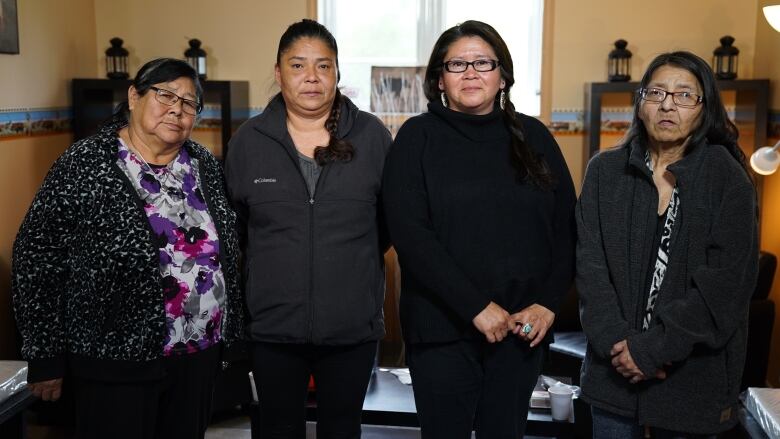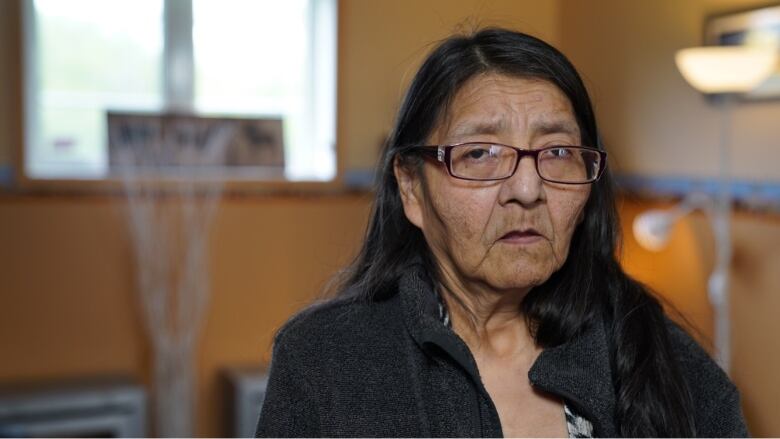Grandmothers call for monument to honour Sagkeeng First Nation's MMIWG
A CBC analysis found Sagkeeng has highest number of cases in one community in Canada

Several grandmothers in Sagkeeng First Nation would like to see a permanent monument in their communityto remember loved ones who went missing or were murdered.
A CBC News analysis found Sagkeeng First Nation has among the highest number of unsolved cases of missing and murdered Indigenous women and girls fromone community in the country.CBC recently documented five more casesin the community.
The remains of Janet Bruyere's granddaughter, Fonessa Bruyere, were found in a field northwest of Winnipeg in August 2007. She would like to see something commemorate Fonessaand the other missing and murdered women and girls.
"They [people] never mention anything about her," says JanetBruyere. "I feel depressed."
Commemorate missing and murdered cases
Lillian M. Cook, an advocate working with the grandmothers and families,sent aproposal sent to chief and council in March described the need for a monument with a memorial park and water fountain for the community.
Based on meetings with family members, a bronze statue of an Indigenous female in full regalia was proposed as a way to remember the lives taken.

According to a Statistics Canada report in 2015, the rate of homicide for Indigenous males was seven times higher than for non-Indigenous males, and three times higher than Indigenous females.
"I'd like to see that monument for these women that were taken and for my grandson," says Linda Arkinson.
Tyler Arkinson, 14, went missing three months before his body was found along the south shore of the Winnipeg River in June 2010.
He was last seen leaving a house party and Arkinson believes her grandson was beaten to death. At the time, police said the cause of death was undetermined.
Arkinson is also Sharon Abraham's aunt. Forensic evidence of Abraham was found on Robert Pickton's farmin 2004. Her family says that evidence was a fingernail.

Grandmothers, advocates calling for change
The roots of so many violent deaths and disappearances can be traced to the dark history of residential schools, said Cook.It was also echoed in the first public hearings of the MMIWG Inquiry held earlier this month in Whitehorse.
"I think it's from Indian residential school and colonization," says Cook.
"We have a lot of women that are displacedthe families and the women that have gone missing are either been displaced, homeless or leave the reserve and as a result this happens."

Janet Bruyere said she knows there are far too many cases of missing or slain Indigenous women and girls in her community, and wants it to come to an end.
The latest case involves Serena McKay, a 19-year-old who was brutally beaten and killed on the Sagkeeng First Nation in late April. While she had ties from Peguis First Nation, McKay was attending high school in the community and set to graduate this year.
"There's too muchstuff going around, too many drugs that's supposedto be stopped," says Bruyere.
Healing needs to happen
Last month the Giigewigamig Traditional Healing Centre opened in Pine Falls to serve four nearby Indigenous communities including Sagkeeng.
The healing lodge will provide western and traditional Indigenous approaches to the four communities and beyond.

"What happened in those [residential] schools, that needs to be discussed once we can start talking about things like that then we can start healing," says Cook.
Arkinson says some people have lost their teachings and respect for one another.
"We should be standing together as one to give each other that support instead of hurting one another."













_(720p).jpg)


 OFFICIAL HD MUSIC VIDEO.jpg)
.jpg)



























































































